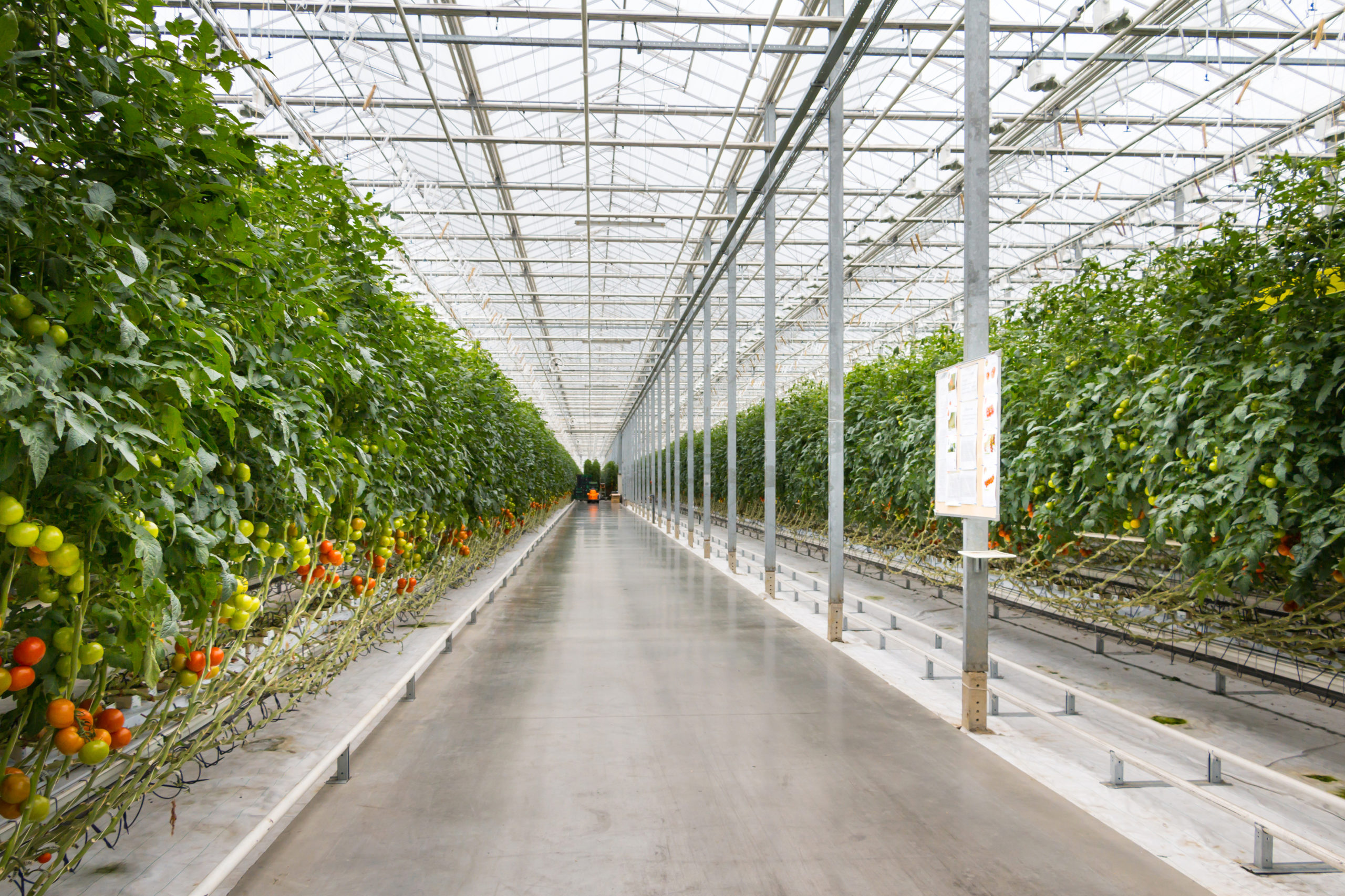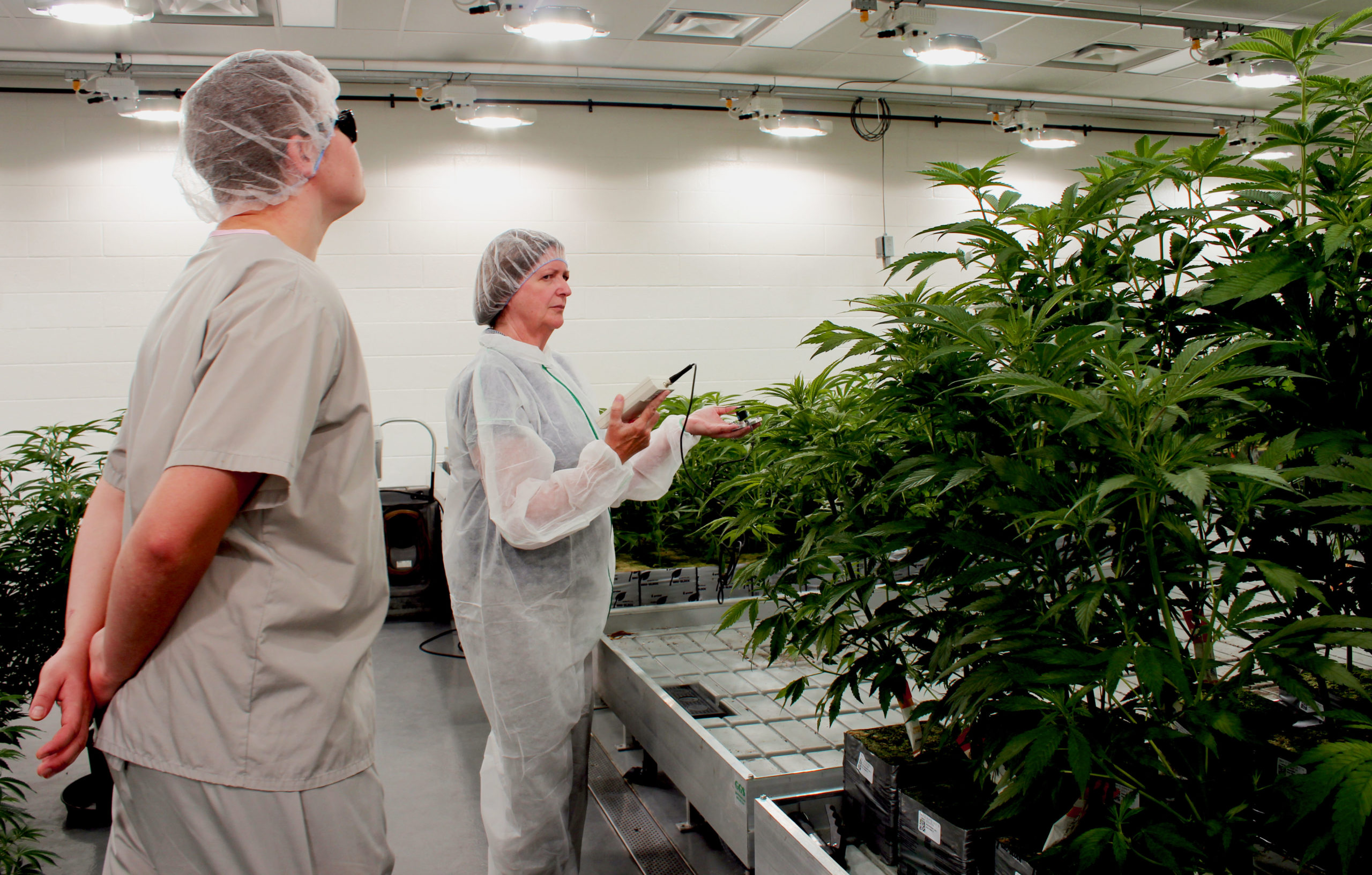There is a strong relationship between lighting and yield. With every 1% increase in light, there is a 1% increase in growth and yield. Measuring yield in your greenhouse is an important way to gauge efficiencies and profitability, so you can better assess how your inputs affect overall yield and plant growth.
In this article, we overview the relationship between lighting and yield while examining ways to calculate yield and manage your lighting system to be the most efficient and profitable for your growing operation.
Growing in a controlled environment allows you to manipulate and optimize your environment to achieve the highest yields, as you are not controlled by the seasons. Using technology, such as lighting, environmental controls, and automation software to better manage your environment can increase efficiency. Heating, cooling, ventilation, and CO2 enrichment are also important environmental considerations that impact the health and productivity of your crops. You should consider these as part of your overall evaluation of yield and productivity.
Your Environment
First off, good production planning and process management will allow you to manage your environment easily―regardless of whether you’re growing in a fully controlled (indoor) or greenhouse environment.
Working in a fully controlled environment like a warehouse can make it easier to manage climate controls vs. a traditional greenhouse. This is because you rely less on outside environmental parameters, such as sunlight and outdoor weather conditions. However, you must have your environmental controls dialed in so you’re not wasting energy or space. When working in a warehouse, where artificial light is your only source for plant growth, optimizing your environment is key to profitability.
In a greenhouse setting, where luminaires are used for supplemental lighting to extend day length or reach a desired DLI, making the right choices when selecting a grow light is important for assessing overall ROI. In general, lighting operation costs are lower in a greenhouse because, unlike warehouses, they do not need to be on all year since the sun provides the majority of the light. The addition of supplemental lighting in a greenhouse will improve photosynthesis, yield, and product quality, thus enabling earlier or year-round production. We highly recommend using a PAR (photosynthetic active radiation) sensor in a greenhouse setting to ensure your crop is getting a consistent level of light.

What Lighting Should I Use?
There are several kinds of horticultural lighting used by growers (HID and/or LED luminaires). However determining what will get you the greatest return will depend on your application and overall goals.
While spectrum influences morphology, light intensity is what influences yields on crops. When deciding what lighting system to maximize yields, spectrum is not necessarily as important as light intensity. Still, having the appropriate spectrum for specific stages of growth will help optimize overall efficiencies and target specific goals you may have.
So when deciding between HID or LED lighting in terms of yield and profitability, it is more important to look at all the aspects within your growing operation and then decide if the ROI makes sense. For instance, if you already have HIDs and want to go LED, installing a hybrid LED-HPS system might make the most sense instead of converting the entire operation over to LED. This setup will help decrease overall costs because you can probably keep the existing infrastructure.
Other considerations should include your regional climate. If you are growing in a northern climate that relies on HPS lamps to help heat the greenhouse in the winter, then an HID system would likely make the most sense to increase savings on heating. If you are growing in a closely–tiered vertical operation in the desert, LED luminaires would likely make the most sense because of their lack of radiant heat. Again, it will depend on your individual application, as no two facilities are the same.
Another important consideration is how crop growth, uniformity, and productivity are influenced by the distribution of light and the amount of light delivered to the crop canopy. If you have spaced benches, LED lighting might be better because of the directional distribution of light. If you are growing with close benches and little to no walkways, a HID or hybrid application may be best. This is because LED and HID lighting are different in how they direct light into the crop. Additionally, LEDs will require more lights in a grow space than HIDs to achieve the same uniformity – so this should also be taken into consideration.
Many times, if light plans are not done correctly by a professional company, there can be areas of low and high intensity because uniformity was not properly calculated. This will make for greater inefficiencies in your operation by affecting many areas including water and pest/disease management. Also, plants may grow slower and faster making it harder to manage the environment and ultimately your yield will suffer. Working with a professional lighting company such as P.L. Light Systems will help you achieve the greatest efficiencies in your facility.

Crop Type
The type of crop you grow will also influence your lighting choice. The top of the crop canopy will naturally receive more light than the bottom. Directing light down into a tall crop can be difficult with the wrong luminaire. For tall crops like tomatoes or cannabis, it’s important to think about how the light source is directing light into the crop – having a reflector will naturally increase the amount of light penetrating deep into the foliage. Lighting without reflectors, such as LEDs, will require more lamps to achieve high uniformity and even light distribution into the crop. So, choosing the correct lighting system is imperative for optimizing your environment and ensuring a good return on investment with a palatable back period.
Determining your PPFD and DLI for your application:
The target light level at the crop canopy should always be the starting point of a light plan. All other factors that will affect the layout and performance of the luminaires should be considered to determine how to achieve the desired light level, with optimal uniformity and efficiency.
Understanding how light is measured and the amount needed for your crop is the first step in optimizing your lighting system to get the most out of your crop. We use two measurements to measure light: PPFD (photosynthetic photon flux density) and DLI (daily light integral).
PPFD measures the amount of PAR (photosynthetically active radiation) that is distributed to and arrives at the crop canopy. PPFD is measured in micromoles per square meter per second (μmol/m2/s). It is important to note that PPFD is a ‘spot’ measurement on the crop canopy – the average PPFD at several ‘spots’ are taken under a defined height.

DLI refers to the cumulative amount of PAR light received in a 1 square meter (10.8 sq. ft.) area each day or mol/m2/d. Like measuring rainfall, DLI cannot be determined from an instantaneous reading. Just like a rain gauge is used to calculate the total amount of rain received in 24 hours, DLI measures the accumulation of PAR light over a day.
Knowing whether your crop requires medium, high, or very high levels of light is important to determine your DLI and maximize your efficiencies and yields. A lower-light crop like lettuce requires only 17 moles of light per day, but high-light crops like cannabis or tomatoes need at least 30 moles for proper growth and development to ensure the highest quality and yields. For a crop like cannabis, some growers will even push the light levels to 40-45 moles per day to help increase yields.
It is important to note that the higher the light intensity, the more you need to monitor other environmental parameters to ensure a balanced growing environment. In addition, when it comes to cannabis, many different strains have been bred to respond differently to various temperatures, light intensity, and other parameters. Knowing your plant’s light requirements will help increase your success in growing at higher light intensities since some will perform poorly under high light.
How to Measure Yield
Yield is the most important measurement of profitability. When growing in a controlled environment, understanding yield metrics is important to make sure you are getting the most out of your lighting – and to make sure you are being profitable. As mentioned, the choice of supplemental lighting will depend on your type of facility, environment, and crop. Supplemental lighting can increase plant density while obtaining greater fruit production or yields. Crop growth, uniformity, and productivity are influenced by the homogeneity of light distribution and the amount of light delivered to the entire foliar canopy.
The most common way to measure a crop like cannabis is in grams/kilograms per square foot. Yield is seen as the most important way to measure potential profitability. Measuring yield allows the grower to understand how well the space is being utilized, if grow conditions need to be adjusted, or if some varieties/strains produce better than others.
To calculate this, you need to look at your cultivation space and area of plants.
We will use cannabis as an example and measure yield in grams per square foot of growing space.
If you have a 5000 square foot cultivation area with 100 4×8 ft tables, your grow space would be about 3200 sq ft.
If you reported a yield of 195000 grams from that space, you can now do your calculation. (Note: the final product weight should be reported dry and destemmed, as it should be in a condition that will qualify as a final product.)
Calculation:
Total yield in Grams/Total cultivation area = grams per square foot
195000/3200 = 60.94 grams per sq foot.
As you can see, that space averages about 61 grams. To make this even more accurate, you should measure the yield in grams per square foot per year to get an overall average and better understanding of areas where you can improve.
From this number, you can now assess if you are reaching your goals and if the parameters should be adjusted. You should also ask yourself if the ROI makes sense based on these yields. Are there areas to improve, such as increasing CO2, temperature, light levels, plant spacing, etc.?
Grams per Light is another way to calculate yield. However, it is not the most telling of ways to determine if your space is efficient since this measurement only tells us the yield under a single light. We also need to consider the wattage and the spacing of the lights to truly see efficiency. Therefore, because it lacks specifics such as the size of the space and how many plants are “under” one light, it is not a recommended way of measuring yield or efficiency.
Production Efficiency
While crop yield is an important way to measure metrics for profitability, the amount of product a grower can produce, measured against the resources used to produce it, is a more holistic approach to measuring overall efficiency. It’s important to maximize productivity per square foot the same way other types of industries do without sacrificing efficiency. The size and setup of your facility can account for overall efficiencies. Environmental control systems that can automatically control parameters will help streamline growth. Poor production management and planning will lead to inefficiencies.
Numerous other factors can impact a crop’s yield, including facility design, genetics, CO2, temperature, and nutrients. Ensuring these are all in balance is important to increase efficiency in your operation. For example, if temperature, light, and CO2 levels are not balanced, your plant will not grow optimally and you will have wasted energy. An optimized environment will bring you the most success, help you get the most out of your lighting system, and achieve the highest yields from your crop without sacrificing plant health quality.


